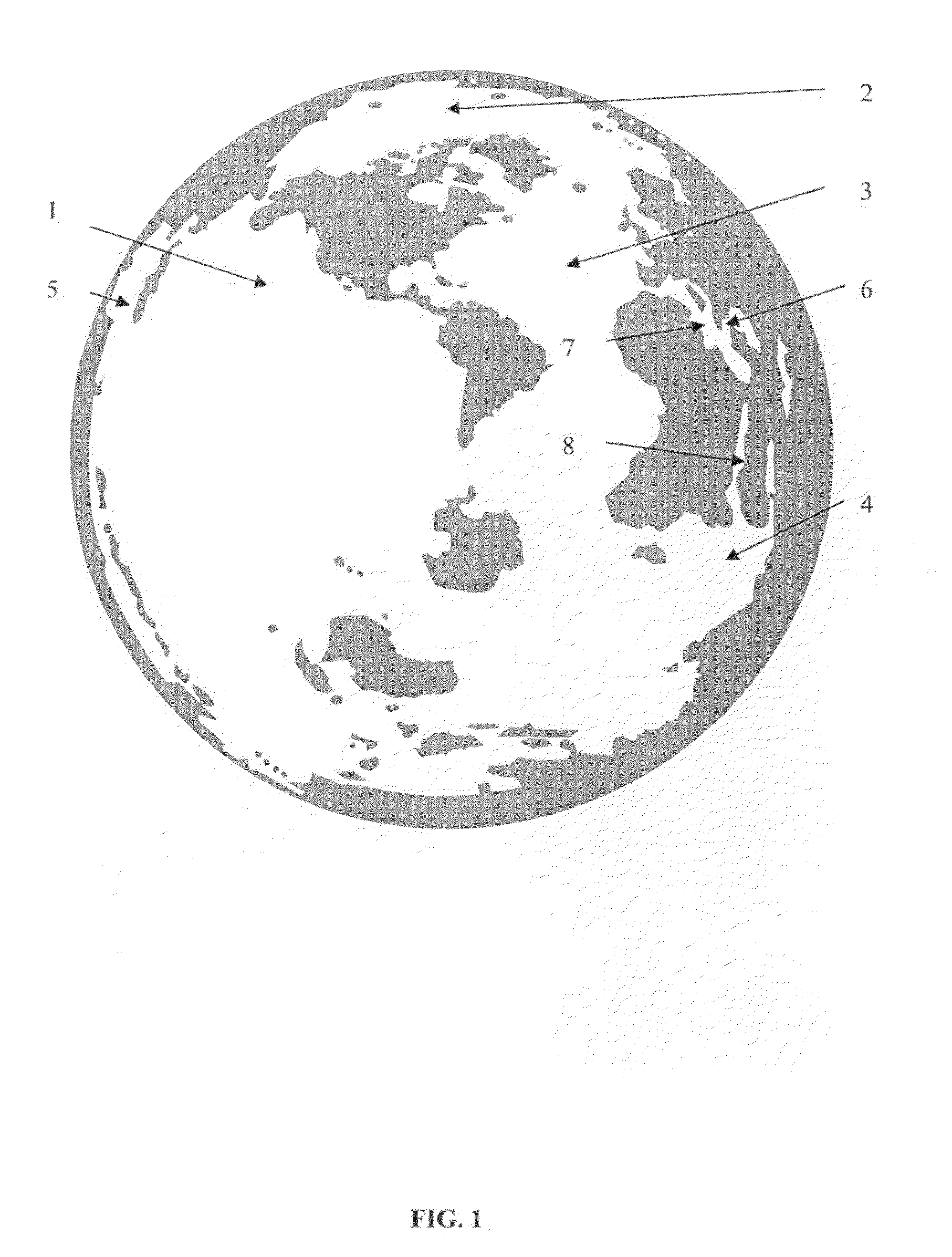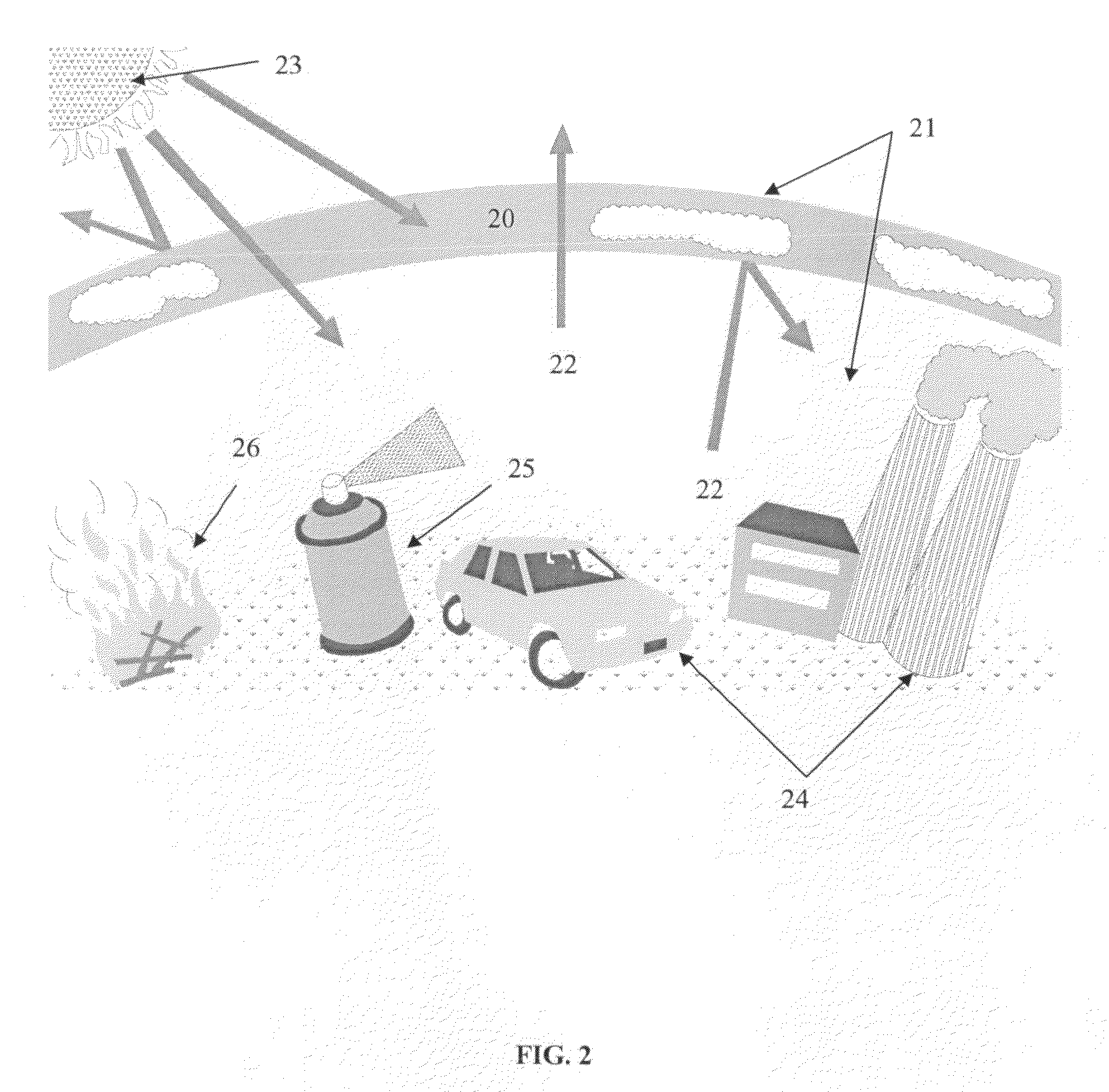Global Warming Mitigation Method
a global warming and mitigation method technology, applied in the field of global warming mitigation methods, can solve the problems of limited capacity and duration, unresolved environmental outcomes of these methods, and predicted double-digit atmospheric co.sub.2 levels in as little as 60 years. to achieve the effect of moderate the temperature fluctuations in the deser
- Summary
- Abstract
- Description
- Claims
- Application Information
AI Technical Summary
Benefits of technology
Problems solved by technology
Method used
Image
Examples
Embodiment Construction
[0043]In respect of the following and previously set out description and explanation, it should be understood that while the information given is considered to be correct, such explanations are necessarily somewhat speculative due to the complexity of natural systems and direct field measurement of CO.sub.2 sequestration is difficult as tools currently employed are to varying degrees operationally and theoretically limited. Applicant would not want to be bound, therefore, by the following if, subsequently, new and better information becomes available. The explanations hereinafter given are made for the purpose of full and complete disclosure of the invention but the qualification given above should be borne in mind.
[0044]The following description generally relates to systems and methods for sequestering water and CO.sub.2 in a desert environment. Such an environment may be treated to yield relatively high value commercial and sustaining food products.
[0045]The present invention sign...
PUM
 Login to View More
Login to View More Abstract
Description
Claims
Application Information
 Login to View More
Login to View More - R&D
- Intellectual Property
- Life Sciences
- Materials
- Tech Scout
- Unparalleled Data Quality
- Higher Quality Content
- 60% Fewer Hallucinations
Browse by: Latest US Patents, China's latest patents, Technical Efficacy Thesaurus, Application Domain, Technology Topic, Popular Technical Reports.
© 2025 PatSnap. All rights reserved.Legal|Privacy policy|Modern Slavery Act Transparency Statement|Sitemap|About US| Contact US: help@patsnap.com



